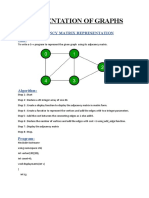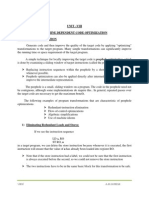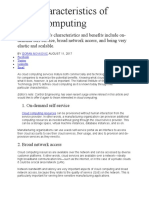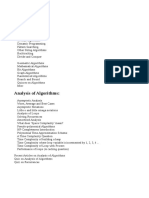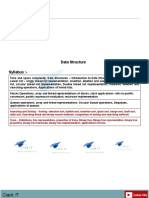0% found this document useful (0 votes)
2K views13 pagesMaximum and Minimum Using Divide and Conquer in C
The document describes an algorithm to find the k-th smallest element in an array using a randomized quickselect approach. It partitions the array around a randomly selected pivot element and recursively searches in the correct subarray based on the pivot's final index. This achieves an expected linear time complexity of O(n) versus the worst-case quadratic time of regular quickselect. The code provided implements this randomized quickselect algorithm to find the 3rd smallest element in a sample array.
Uploaded by
ragunathCopyright
© © All Rights Reserved
We take content rights seriously. If you suspect this is your content, claim it here.
Available Formats
Download as DOCX, PDF, TXT or read online on Scribd
0% found this document useful (0 votes)
2K views13 pagesMaximum and Minimum Using Divide and Conquer in C
The document describes an algorithm to find the k-th smallest element in an array using a randomized quickselect approach. It partitions the array around a randomly selected pivot element and recursively searches in the correct subarray based on the pivot's final index. This achieves an expected linear time complexity of O(n) versus the worst-case quadratic time of regular quickselect. The code provided implements this randomized quickselect algorithm to find the 3rd smallest element in a sample array.
Uploaded by
ragunathCopyright
© © All Rights Reserved
We take content rights seriously. If you suspect this is your content, claim it here.
Available Formats
Download as DOCX, PDF, TXT or read online on Scribd
/ 13





























